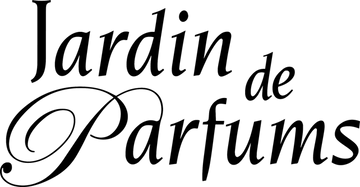The beauty of Jardin de Parfums, is that we truly are a garden of perfumes.
As we sit in our laboratory garden in Italy to create our fragrances, we draw our inspiration from some of the most glorious gardens of the world—The Gardens of Versailles in France, the Kew Royal Botanic Gardens in the UK, and Villa d’Este in Italy, just to name a few. At Jardin de Parfums, we have cultivated our own gardens to extract the freshest and most natural of ingredients so that we stay true to nature.
We peer out the open windows and notice the delicate jasmine flowers dancing in the wind, the lemons on the lemon trees glowing in the sunshine, and the sweet aroma of tuberose and fragrant patchouli plants. Within these few seconds, nature has provided us with a magical combination of ingredients to begin our journey in creating the next addition to the Jardin de Parfums family. But this is only the beginning.
Just as nature is both complex and beautiful, so too is perfume. It’s intricacies and complexity is what makes each scent unique. The same ingredients could be used in two fragrances, but the method in which the ingredients are combined is what differentiates the two, making each one special in its own way.
For us at Jardin de Parfums, we concern ourselves with ensuring that each one of our fragrances has its own character, but it is developed with compatibility in mind. Within the world of fragrance, we can categorize each perfume into a certain “family” and within each family, we find sub-families that tell us more about the type of scent that each perfume belongs to. To begin our journey into discovering the Jardin de Parfums garden, it’s beneficial to take a look at our Fragrance Wheel.

Each fragrance can be categorized into four main family groups: Floral, Oriental, Woody, and Fresh. To best determine the family of a fragrance, we look at two main aspects: the composition and the distribution of ingredients. In other words, we see what type of ingredients are being used and then we see how these ingredients are being combined within the fragrance. It is for this reason that many fragrances fit in-between two families or they are part of a sub-family. For example, our Papavero Nero from the Papaverum collection has top notes of citrusy bergamot and lemon, but is considered part of the oriental family due to its base notes of agarwood, patchouli, amber, and leather.
Once we know the family of a fragrance, we can begin to play around and experiment with creating our own unique scent by implementing the Art of Layering. Our experts at Jardin de Parfums have created each one of our perfumes using what we like to call, the “Harmony Effect.” Each fragrance in the Jardin de Parfums garden has been developed in such a way that the ingredients of one fragrance can subtly enhance certain aspects of another fragrance. For example, when using the jasmine flower, our noses at Jardin de Parfums make sure that the jasmine flower that is used in White Essentials Bird of Paradise, is the same type of jasmine that is used in our Unique Black Musk. Around the world, there are approximately six different types of jasmine flower. Each one has the overall jasmine scent, but each differs slightly. In order to create a harmonizing effect when using different fragrances within our collections, we make sure that the same type of jasmine is always used for any fragrance that includes jasmine.
When taking this Harmony Effect into consideration, we are confident that any perfume from our collection could easily be used with another to create a cohesive and distinctive fragrance like no other. To try your own layering, we suggest pairing fragrances that are found within the same family or sub-family and those fragrances that are found at opposite sides of the fragrance wheel.
We invite you to explore our website and visit one of our Jardin de Parfums garden boutiques to meet with one of our fragrance ambassadors who will be happy to assist you with finding your personalized Jardin de Parfums layered scent.
In the meantime, to get you started on your journey, here are a few combinations we love:
FLORAL: White Oud (Papaverum) + Sugar Flower (White Essentials)
ORIENTAL: Perfect Amber (Unique) + Oracle (Papaverum)
WOODY: Midnight Fire (White Essentials) + Shade of Love (Unique)
FRESH: Silver Flame (Unique) + Oud Riviera (Papaverum)
Now that you’ve learned a bit more on the Art of Layering, which flower will you pick?
Tags:
Related Articles




